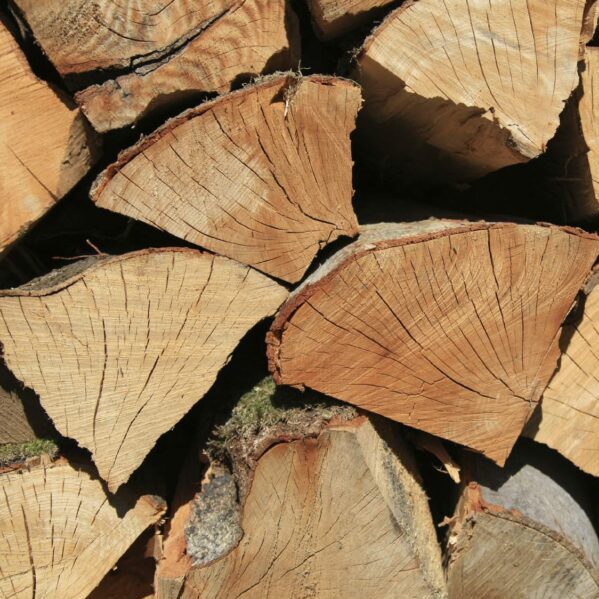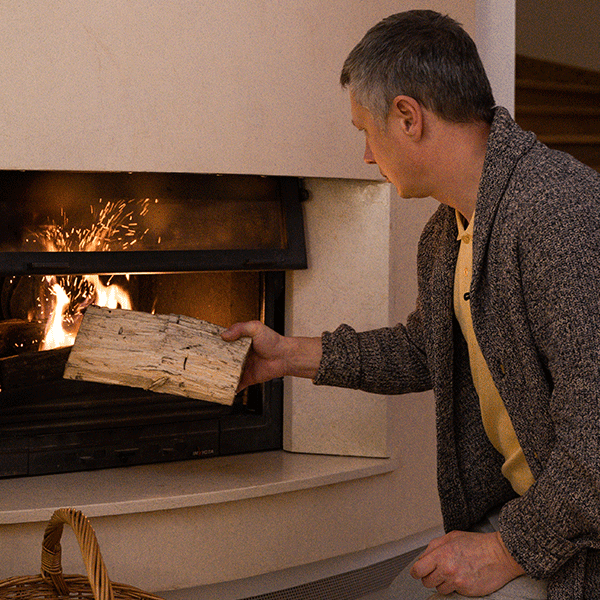Stages Of Wood Combustion
Fire is one of the most potent forces of nature. Its recorded use dates some 420 million years ago (Silurian Period) when early man rubbed two charcoal sticks together to create this mysterious heat source known as fire. So, how is fire really produced, and what three ingredients MUST ALWAYS be present? Read on as we uncover the mystery and magic of the wood combustion process.
 The Fire Triangle
The Fire Triangle
For an object to combust into flames, three ingredients MUST be present: heat, fuel, and oxygen, aka The Fire Triangle.
Heat
Heat is required to start a fire. The heat can come from various sources, such as a match, a lighter, or a spark from a fire starter, such as kindling, twigs, or creosote
Fuel
Fuel is any material that burns. Common fuels include wood, paper, liquified petroleum (natural LP gas), and propane.
Oxygen
Oxygen is essential for combustion. Without oxygen, a fire will not be able to survive.
The fire will burn out if you remove any of these three ingredients. For example, if you remove the heat, the fire will cool down until it burns itself out. Without fuel, the fire will have nothing to burn. And if you remove the oxygen, the fire will not be able to breathe and die out.
Combustion Process Defined
The four stages of combustion are the ignition delay period, the period of uncontrolled combustion, the period of controlled combustion, and the afterburning period. These stages occur in all internal combustion engines, but they may vary in length and intensity depending on the type of engine and the fuel being used.
Ignition Delay Period: The ignition delay period is the time between the injection of fuel into the combustion chamber and the start of combustion. This period occurs because it takes time for the fuel to vaporize and mix with the air in the chamber. The length of the ignition delay period depends on the fuel type, the air temperature, and the engine’s compression ratio.
Period of Uncontrolled Combustion: Once the fuel starts to burn, it does so rapidly in uncontrolled combustion. This is also known as the flame front or the burn. The flame front propagates through the combustion chamber at a very high speed, and the pressure increases rapidly.
Period of Controlled Combustion: The combustion process becomes more controlled after the initial flame front. This is because the fuel and air are more thoroughly mixed, and the pressure in the chamber is higher. The combustion process in this stage is more efficient, producing less emissions.
Afterburning Period: The afterburning period is the final stage of combustion. It occurs when any unburned fuel or air dissipates. The afterburning period is typically very short.
Combustion Process of Wood-Burning Fireplaces
The four stages of combustion also apply to wood-burning fireplaces. When you light a fire in a fireplace (or heating stove), the wood goes through the same combustion process. Here are some tips for managing the four stages of combustion in a wood-burning fireplace:
Start with dry wood. Burn dry or “seasoned” hardwoods. It will result in a shorter ignition delay period with a more efficient combustion process.
Provide adequate air supply. Open the damper fully. A proper draft is essential for complete combustion. If the air supply is too low, the fire will not burn efficiently, resulting in more smoke, soot, and creosote buildup.

Manage the fire. You must tender the flames once the fire is established to maintain a controlled burn. This means adding more wood as needed and adjusting the damper to maintain sufficient airflow.
By understanding the four stages of combustion, you can help ensure your wood-burning fireplace burns safely and efficiently.
Professional Chimney Inspection & Cleaning
Keep your chimney and fireplace safe and efficient with the help of Northeastern Chimney. We are the premier provider of chimney inspections, cleaning, repairs, and installations in Greater Hartford and Central Connecticut. Our certified chimney sweeps will ensure that your chimney is operating properly and safely, so you can enjoy your fireplace all season long.
Call us today at (860) 233-5770 or contact us online to schedule a consultation. We look forward to helping you keep your home safe and warm.
The post Stages Of Wood Combustion first appeared on .
The post Stages Of Wood Combustion appeared first on .
This post first appeared on https://www.mychimney.com